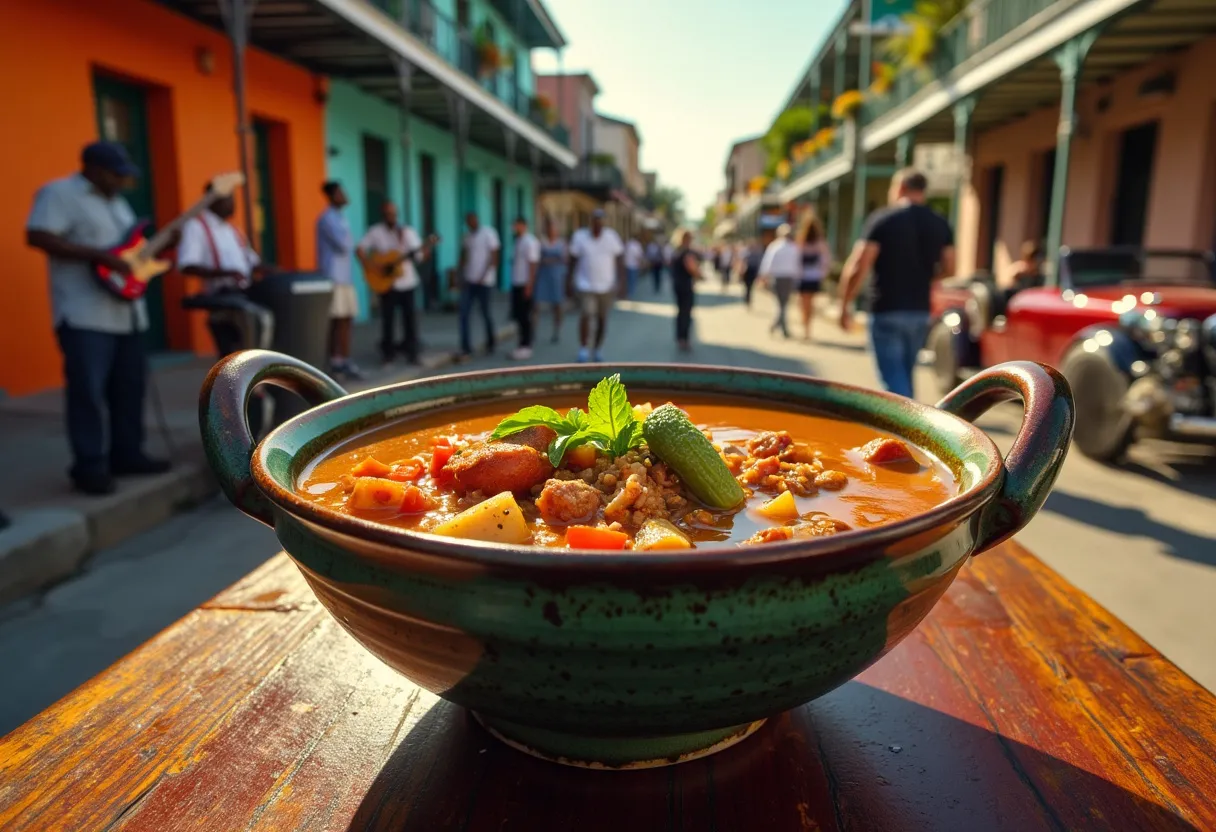
Exploring the Evolution of Gumbo: From the Bayous to the Global Stage
Published on 9/24/2024
Ethan Walker • 9/24/2024
A Rich History Steeped in Tradition
As the rhythmic melodies of jazz float through the streets of New Orleans, a more savory melody begins to unfold in the kitchens across the city: the gentle simmer of gumbo on the stove. This iconic Cajun and Creole dish, with its roots deeply embedded in the bayous of Louisiana, tells a story of cultural amalgamation and culinary ingenuity. But how did this soulful dish make its journey from local fare to global delight?
The African Influence
Gumbo's journey begins with the African diaspora that brought together a myriad of culinary elements during the Transatlantic Slave Trade. The foundational ingredient, okra, often referred to as "gombo" in West Africa, provided the dish with its name and a hint of its thick, lush texture. African cooks further enriched the dish with their skillful blending of spices, laying the groundwork for gumbo's distinctive flavor profile.
The French Connection
French settlers in the Louisiana territory added their own layers of complexity. The addition of a roux, a mixture of flour and oil or butter, gave gumbo its nutty, rich consistency. This culinary technique was adapted from French cuisine and would go on to play a pivotal role in defining gumbo's texture and flavor.
Influences of the Native American Experience
Native Americans contributed uniquely to gumbo by incorporating locally sourced ingredients like bay leaves and file powder, made from the ground leaves of the sassafras tree. This ingredient, a gift from the land, adds depth and a distinctly earthy flavor.
Spanish and German Touches
As if history itself were a large pot of simmering gumbo, Spanish settlers introduced bell peppers, an essential part of the "holy trinity" of onion, bell peppers, and celery that forms the base for many Creole dishes. Meanwhile, German settlers brought with them their love for sausage, particularly andouille, which has become synonymous with the dish.
Gumbo Today: A Dish for the Modern Era
While its ingredients may vary across kitchens and cultures, today's gumbo stands as a testament to what can be achieved when diverse worlds meld harmoniously in a pot. Various cultures have left their imprint, making this dish as diverse as the city it hails from. Gumbo has journeyed far beyond the iconic wrought-iron balconies of the French Quarter and has found a place on menus worldwide, taking on exquisite new forms while honoring its venerable origins.
The Global Stage
Gumbo's ascension to global recognition has happened without losing its Louisiana roots. Its smoky, spicy, rich complexity continues to capture imaginations from Tokyo to Toronto, adapting to local tastes while retaining its core identity. This reflects New Orleans itself—a living tapestry of cultural influences.
Preserving the Heritage
In my work as a cultural food historian, my mission is to maintain the vibrant legacy of traditional Cajun and Creole cuisines. By sharing and teaching these age-old techniques and stories, we ensure that dishes like gumbo thrive, bringing people together as it has for generations, offering gustatory comfort and a connection to its rich past.
Ethan Walker
Senior Chef and Cultural Food Historian | I've been cooking
Ethan was born and raised in the culturally rich city of New Orleans, where food is woven into the fabric of life. His family has passed down Cajun and Creole recipes for generations, and Ethan became passionate about preserving these culinary traditions. After working in various restaurants, he eventually opened his own eatery, which became known for its authentic gumbo, jambalaya, and beignets. Now semi-retired, Ethan teaches cooking classes and writes about the history of Southern cuisine. His mission is to ensure that traditional Cajun and Creole cooking remains vibrant for future generations.